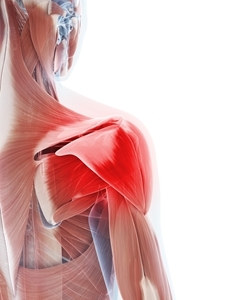Travel physical therapy experts agree, what's the point of getting surgery if you don't need it? People who experience nontraumatic rotator cuff tears may do just as well with physical therapy, according to recent research.
In the 2014 study published in Bone and Joint Journal, patients who received physical therapy for rotator cuff tears showed similar rates of improvement and patient satisfaction compared to those who received arthroscopic surgery or open surgical repair combined with physical therapy.
As travel PT professionals know, the rotator cuff is a group of four muscles and tendons responsible for keeping the shoulder joint stable. These muscles and tendons hold the arm in the ball and socket joint. However, injuries to this area are very common and can result from sports – especially throwing sports like baseball – heavy lifting and even repeated strain to the shoulder such as walking a dog that pulls on the leash.
The tears are categorized as full-thickness or partial thickness, depending on how intense they are. Full-thickness tears extend from the top to the bottom of a rotator cuff muscle/tendon. Partial-thickness tears affects some portion of a rotator cuff muscle/tendon but do not span all the way through. When left untreated, this injury can trigger severe pain and a limited ability to use the affected arm.
So, patients dealing with the problem face a few solutions: physical therapy, surgery or both. For surgery, the doctor may perform a large, open incision to attach the tendon back to the bone where it tore off. Small rivets, called suture anchors, are often used to help attach the tendon to the bone.
But this process can be avoided altogether if patients take the proper steps to repair their shoulder with physical therapy.
For the study, 173 patients, ages 55 and older who had experienced non-traumatic tears of the supraspinatus tendon, were split into three groups. The first group received only physical therapy, the second had acromioplasty and physical therapy, and the third received rotator cuff repair, acromioplasty and physical therapy. Doctors examined them throughout a one-year period, at three, six and 12 months.
In the results, researchers found there was no substantial differences between groups. They concluded that operative treatment is no better than conservative treatment. You, as a physical therapy professional, can help patients regain the motion and strength of their shoulders and save them the cost and recovery time of surgery.

